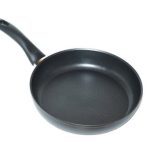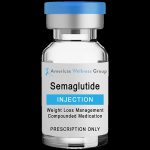A q switch laser treatment is a non-invasive procedure that utilises high-intensity laser pulses to effectively address skin pigmentation, tattoos, and various dermatological conditions by breaking down melanin and ink particles without damaging the surrounding skin.
It is a highly effective technique utilised in various cosmetic and medical applications. It emits short, high-intensity pulses of light that target specific skin issues, promoting healing while minimising damage to surrounding tissues.
Recognising the necessity for skin rejuvenation involves assessing signs of ageing, environmental damage, and dullness. Treatments aimed at revitalisation can restore vibrancy and health, improving overall complexion while enhancing individual confidence and well-being through improved skin appearance.
Q-Switch Laser Treatment
A Q-Switch Laser delivers short, intense energy pulses to target specific skin layers. It is utilised in various dermatological treatments. It effectively removes tattoos and pigmentation while minimising damage to surrounding tissues, promoting safe and efficient skin rejuvenation.
How the treatment works to rejuvenate skin
The treatment revitalises skin by stimulating collagen production, enhancing elasticity, and promoting cellular turnover. Techniques like microdermabrasion or chemical peels remove dead cells, revealing a smoother complexion, while nourishing ingredients restore hydration for a youthful appearance.
Benefits of Using Q-Switch Laser Treatment
- Effective Pigmentation Removal:
Q-Switch laser treatment is highly effective for targeting and reducing various pigmentation issues, including sunspots, age spots, and melasma, leading to a more even skin tone. - Acne Scar Reduction:
This laser treatment helps diminish the appearance of acne scars by promoting collagen production and skin regeneration, resulting in smoother skin texture. - Tattoo Removal:
One of the primary uses of Q-Switch lasers is tattoo removal. The laser breaks down the ink particles in the skin, allowing the body to eliminate them over time, often with minimal discomfort. - Minimal Downtime:
Compared to more invasive procedures, Q-Switch laser treatments typically involve minimal downtime. Most patients can resume their daily activities shortly after treatment. - Versatile Applications:
This treatment can address various skin concerns, including uneven skin tone, fine lines, enlarged pores, and even certain birthmarks, making it a versatile option for many individuals. - Non-Invasive Procedure:
Q-Switch laser treatment is non-invasive and doesn’t require cuts or incisions. This reduces the risk of complications and provides a safer alternative to surgical options. - Quick Treatment Sessions:
Sessions are usually short, lasting 15 to 30 minutes, making them convenient for individuals with busy schedules. - Long-Lasting Results:
Many patients experience significant and long-lasting improvements after a series of treatments, making it a worthwhile investment for achieving desired skin results. - Safe for Most Skin Types:
Q-Switch lasers can safely treat various skin types and tones, and their customisable settings accommodate individual concerns and sensitivities. - Enhanced Skin Texture:
In addition to treating pigmentation issues, the treatment can improve overall skin texture, giving it a healthier, more youthful appearance.
The Science Behind Q-Switch Laser Treatment
Q-Switch laser treatment leverages advanced scientific principles in laser technology to effectively target and treat various skin concerns.
Laser Technology
Q-Switch lasers utilise a specific type of laser called a Q-Switch, which can produce short, high-energy light pulses. The “Q” refers to the quality factor of the laser, which determines its ability to generate a high peak power in a concise time frame.
Wavelength and Absorption
Different skin conditions require different wavelengths of light for effective treatment. Q-Switch lasers are available in various wavelengths (e.g., 532 nm for green light, 1064 nm for infrared light), allowing them to target specific pigments in the skin. The targeted pigments, such as melanin in dark spots or tattoos, absorb the light energy.
Photoacoustic Effect
When the laser energy is delivered, it causes a photoacoustic effect—an interaction of light and sound waves. This results in rapid heating and expansion of the pigment particles. The sudden change in pressure helps break down these particles into smaller fragments.
Body’s Natural Elimination
Once the pigment particles are fragmented, the body’s immune system recognises them as foreign and works to eliminate them. Macrophages, an immune cell, engulf the smaller pigment particles and remove them through the lymphatic system, gradually fading the treated area.
Collagen Stimulation
In addition to targeting pigmentation, Q-Switch lasers can stimulate collagen production in the dermis (the deeper layer of the skin). This occurs through controlled thermal damage, which triggers the skin’s natural healing response, promoting smoother and firmer skin.
Non-Invasive Procedure
Q-Switch laser treatment is non-invasive, meaning it does not require incisions or significant recovery time. The energy is delivered precisely to the treatment area, minimising damage to surrounding tissues and reducing the risk of scarring.
Customisation
The treatment can be tailored to individual skin types and concerns. Practitioners can adjust the laser settings, including the energy level and pulse duration, to optimise effectiveness and safety for each patient.
The technology used in Q Switch Laser treatments
Q-Switch laser treatments utilise advanced technology that delivers powerful, short light pulses to target specific skin imperfections. This non-invasive method effectively removes tattoos, pigmentation, and scars while promoting skin rejuvenation with minimal patient discomfort and downtime.
How it interacts with your skin to stimulate revitalisation
It engages with your skin, promoting renewal through enhanced circulation and cellular activity. This interaction revitalises the complexion, improving texture and radiance while aiding in the natural healing process for a healthier, more luminous appearance overall.
What to expect during the procedure
During a Q-Switch laser treatment, you can expect a straightforward procedure that typically begins with a consultation to assess your skin and determine your goals. On the day of the treatment, the practitioner will cleanse the area and may apply a topical anaesthetic to minimise discomfort. You’ll wear protective eyewear, and then the Q-Switch laser will be used in short bursts to target specific skin concerns, such as pigmentation or acne scars. While you might feel a slight snapping sensation, it’s usually manageable. After the treatment, the skin may appear red or swollen, similar to a mild sunburn, which should subside within a few hours to a couple of days. Your practitioner will provide aftercare instructions to ensure optimal healing and results.
Post-treatment care and instructions
After Q-Switch laser treatment, following specific post-treatment care is important to ensure optimal healing and results. Initially, your skin may appear red or swollen, akin to a mild sunburn, and this should subside within a few hours to a couple of days. Keep the treated area clean and moisturised to promote healing, and avoid harsh skincare products for at least a week. Applying a broad-spectrum sunscreen with at least SPF 30 is crucial to protect your skin from UV exposure, as it will be more sensitive post-treatment. Also, avoid strenuous exercise, hot showers, or saunas for a few days to prevent irritation. Follow any additional instructions provided by your practitioner for the best recovery outcome.
The Results of Q-Switch Laser Treatment
The results of Q-Switch laser treatment can be impressive, often leading to significant skin appearance and texture improvements. Many patients experience a noticeable reduction in pigmentation issues, such as sunspots and melasma, as well as a decrease in the visibility of acne scars and other blemishes. The treatment stimulates collagen production, contributing to smoother, firmer skin. While some improvements can be seen shortly after the procedure, optimal results typically develop over several weeks as the body eliminates fragmented pigment particles. Depending on the individual’s skin condition and goals, multiple sessions may be recommended to achieve the best outcomes, ultimately leading to a more even, radiant complexion.
How long it takes to achieve these results
The time required to attain these outcomes varies significantly based on individual circumstances, commitment levels, and the complexity of the goals. Consistent effort, patience, and strategic planning can lead to substantial progress over weeks or months.
What is a Q-switch laser good for?
Q-switch lasers are effective for various medical and aesthetic procedures, including tattoo removal, skin rejuvenation, acne scar treatment, and pigmentation reduction. Their precision allows for targeted treatments while minimising damage to surrounding tissues for optimal results.
How long do Q-Switch laser results last?
Q-Switch laser results can vary based on individual skin types and the specific issue being treated. Typically, effects may last several months to years, but maintenance sessions are often recommended for optimal and prolonged outcomes.
How many sessions are required for a Q-switch laser?
The number of sessions needed for Q-switch laser treatment varies based on individual skin conditions, the area being treated, and desired results. Typically, 3 to 10 sessions are recommended for optimal effectiveness and safety.
What skin type is the Q-switch laser for?
Q-switch laser treatments are suitable for various skin types. They effectively address issues like pigmentation, acne scars, and tattoos for individuals with light to medium skin tones, while caution is advised for darker complexions due to potential complications.
Conclusion
Q-Switch laser treatment offers numerous benefits, making it an appealing option for those looking to address various skin concerns effectively. Its versatility, minimal downtime, and long-lasting results can be a valuable addition to your skincare regimen. It is a straightforward procedure that typically involves minimal discomfort and downtime. Understanding what to expect during the treatment can help you feel more prepared and relaxed.
It offers numerous advantages, particularly in effectively addressing pigmentation issues and improving skin texture with minimal downtime. However, weighing these benefits against potential drawbacks is important, including variability in results and the need for multiple sessions. Consulting with a qualified practitioner can help you make an informed decision based on your needs and skin type.









